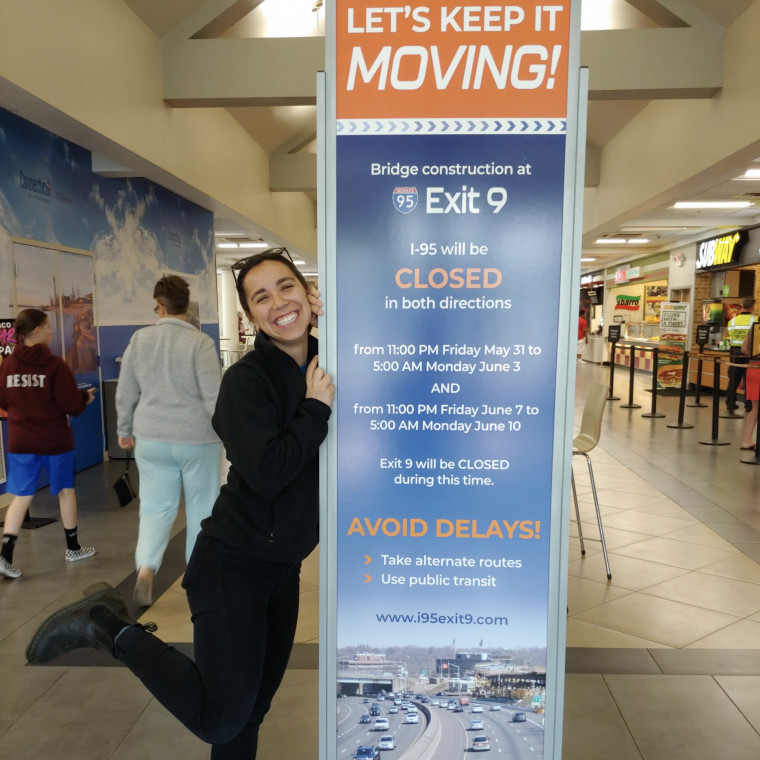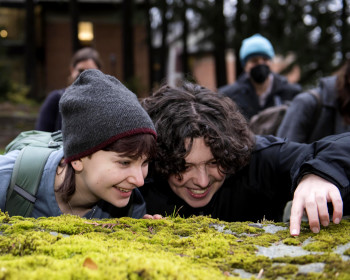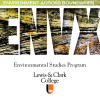A WoMan, a Plan, a Bridge, Connecticut
Open gallery

My interest in urban planning began with a simple question: can people really have a meaningful impact on the world around them? This question led me to complete an interdisciplinary Environmental Studies degree. I studied environmental theory, policy, law, and eventually, the public engagement process through the National Environmental Policy Act (NEPA), which was the topic of my senior thesis. My research showed that NEPA failed to sufficiently address the interdisciplinary nature of complex environmental issues, and, that to do so in a way that prioritized the people affected, would require careful consideration of stakeholders’ desires, needs, and fears.
After a three year stint in the film industry doing sustainability consulting, I landed my first “adult” job at an urban planning firm called FHI Studio. The first major project that I played a significant role on was an Accelerated Bridge Construction project in Stamford, Connecticut in 2019. Stamford is the second largest city in Connecticut clocking in at around 130,000 residents and the Connecticut Department of Transportation (CTDOT) was undertaking a very visible project, the reconstruction of a Route 1 overpass over Interstate 95 in one of the most congested portions of the road.
Accelerated Bridge Construction is a process that allows bridges to be replaced with as minimal a disruption to traffic as possible. It involves building the new bridge, usually next to the existing bridge in a staging area, closing down the existing bridge for a short period of time to demolish it, and then using huge crazy machines to pick up the new bridge portions and drop them into place. The job of my firm was to make sure that as many people as possible were aware of the project and avoided I-95 on two weekends in June when the bridge demolition and replacement was taking place.
This project was the first chance that I had to really engage with people about something going on in their community and ensure that they felt listened to and respected. As a team of two, my mentor and I began public outreach for the project in January, six months before the bridge move. We met with community groups, chambers of commerce, and individuals. We walked pedestrian detours and drove vehicle detours to make sure they were sensible and safe. We visited dozens of businesses, senior care facilities, and schools, and sent postcards to 6,000 residents and businesses. We even had a project phone number and answered calls day or night.
Our work paid off! On the weekends of the bridge demolition and installation, I-95 was clear and detours were in full swing. During the two construction weekends, a livestream of the work on our project website was viewed by more than 68,000 people around the world. The project itself was recognized by the Governor of Connecticut as a resounding success and even received national recognition and awards. To us, the real success of the project was how well we were folded into the project team. We had unfettered access to the CTDOT and the construction contractor and never missed a beat.
While this was just one project, it taught me a big lesson: with support from government agencies it is truly possible to engage, inform, and hear from the public. I have taken the lessons I learned on this project and woven them into dozens of other projects I have worked on in the past three years. Many have served the public in other ways like community master plans, bus network redesigns, and offshore wind projects. I am really looking forward to furthering my education by starting a masters program in the Fall of 2022.
My current plan: more planning!
More Environmental Studies Stories
Environmental Studies is located in room 343A of John R. Howard Hall on the Undergraduate Campus.
MSC: 62
email envs@lclark.edu
voice 503-768-7790
fax 503-768-7620
Symposium Advisor Jessica Kleiss
Environmental Studies
Lewis & Clark
615 S. Palatine Hill Road MSC 62
Portland OR 97219


